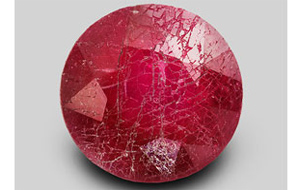Articles about crime, engagement rings, and a necklace worn in the World Series generated the most interest among readers.
5 Points on the Proposed Changes to the FTC Guides
The Federal Trade Commission has issued proposed revisions to its Guides for the Jewelry Industry. Here are a few key things to know about them.
New York--The Federal Trade Commission has issued proposed revisions to the FTC Guides for the jewelry industry, which dictate the terms that can, and cannot, be used to market jewelry.
A few key revisions are outlined below.

Members of the public who want to make comments about the latest changes have until April 4 to do so. The current draft can be found on FTC.gov, and comments can be registered here.
Comments also can be mailed to: Federal Trade Commission, Office of the Secretary, 600 Pennsylvania Ave. NW, Suite CC-5610 (Annex O), Washington, D.C. 20580.
In the meantime, Jewelers Vigilance Committee CEO Cecilia Gardner said the JVC and other industry organizations will work on drafting responses to the latest revisions. In addition, the JVC plans to respond directly to a number of requests made by the FTC, including for more metallurgic testing on surface applications and for consumer perception data on surface-coated materials.
1. The use of the term “gold” in connection with alloys
Gardner said current FTC rules do not allow the use of the word gold to refer to any substance that’s less than 10 karats; Tiffany & Co., for example, cannot use the term gold in connection with its alloy Rubedo and instead refers it to simply as a metal.
Under the FTC’s proposed changes, the industry would be permitted to use the term gold to refer to alloys but must disclose the karatage of the gold and list the other metals present in the alloy as well.
“That’s a big change,” Gardner said.
2. The disclosure of rhodium plating
In its revisions, the FTC is proposing another major change to metals terminology--the disclosure of rhodium plating, which currently is not required.
3. A clarification on lead glass-filled rubies
Gardner said the proposed revisions clarify that the term “lead glass-filled ruby” can be used to refer only to material that contains some measure of red corundum. If the material is non-red corundum and colored glass is added to make it appear red (i.e., to make it look like a ruby), then it
In addition, the FTC stressed that the seller must disclose any and all information about the special care the material requires.
4. The incorporation of the term “cultured” in reference to lab-grown diamonds
Gardner said when the industry submitted its latest comments on the guides to the FTC back in 2012, it asked the FTC to prohibit the use of the word cultured in connection with lab-grown diamonds. The industry contended that the term should apply only to organic processes, such as the one used for pearls.
The FTC, however, has now proposed incorporating the word cultured into the guides but only if it is immediately accompanied by the terms lab-grown or lab-created.
5. The use of varietal names
The FTC’s proposed revisions dictate that terms such as yellow emerald and green amethyst are deceptive and misleading.
The gemstones must be described exactly as they are. In the two examples given above, it would be golden or yellow beryl and prasiolite.
The Latest

As part of the leadership transition, Sherry Smith will take on the role of vice president of coaching strategy and development.

It marks the third time the country has headed the Kimberley Process. Ghana will serve as vice chair.

How Jewelers of America’s 20 Under 40 are leading to ensure a brighter future for the jewelry industry.

The new Bulova x Stetson designs highlight two animals often associated with the American West—the bison and the Texas Longhorn.


Its residency at Yamron Jewelers will run through May 2026.

From influential executives to innovative designers, we pay tribute to the people we said goodbye to this year.

Roseco’s 704-page catalog showcases new lab-grown diamonds, findings, tools & more—available in print or interactive digital editions.

The retailer is expanding into areas with large Indian and South Asian populations.

The Italian brand has opened its first flagship amid the peaks of the Dolomites in Madonna di Campiglio, Italy.

The new curation at the Natural History Museum of Los Angeles County showcases rare gem and mineral specimens in their uncut, natural state.

The couple pleaded guilty to concealing at least $127 million in cash transactions at its precious metals businesses.

Consumers shared concerns about prices, inflation, tariffs, trade, and politics in the survey’s write-in response section.

In February 2026, the auction house will move its headquarters to the former Steinway Hall, a neoclassical landmark on Billionaires’ Row.

The new show will take place Jan. 23-25, 2026.

The former BHP Billiton leader and Gemfields chairman is remembered for his influential leadership throughout his 50-year mining career.

The LVMH-owned brand has partnered with the costume design union to revamp its award for 2026.

The luxury titan inked a deal to acquire an initial minority stake in the jewelry manufacturer with a pathway to full ownership by 2032.

The company’s curation of unsigned vintage and estate jewelry debuted at the Bloomingdale’s in Costa Mesa, California.

In the recent multi-shipment seizure, CBP also found counterfeit Audemars Piguet, Moncler, and Chrome Hearts items.

Helzberg’s Chief Retail Officer Mitch Maggart shared details about its tests of a new store concept rooted in an elevated luxury experience.

Jewelers of America execs and National Jeweler editors discuss tariffs, the sky-high gold price, and the engagement that broke the internet.

The luxury goods company said founder Ippolita Rostagno will remain at the brand’s helm.

Laura Burdese, who joined the Italian luxury brand in 2022, will take on the role in July.

The National Jeweler editors revisit the most noteworthy industry happenings and design trends from 2025.

Need a gift for the cat lover who has everything? Look no further than our latest Piece of the Week.

It purchased the “Grosse Pièce,” an ultra-complicated Audemars Piguet pocket watch from the ‘20s, for a record-breaking price at Sotheby’s.



























